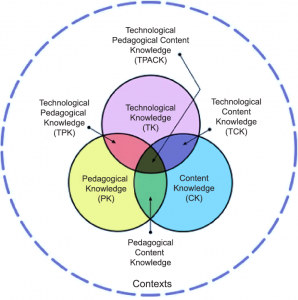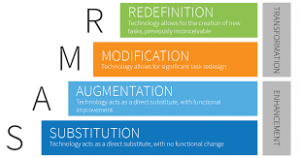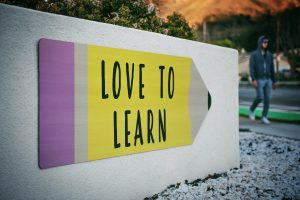
Photo by Christopher Sardegna on Unsplash
Introduction and My Connection:
I enjoyed learning from everyone’s videos and print material. Each presentation highlighted information that I found interesting and very valid, including but not limited to; equity, access, digital citizenship, open access, improving analytics to assist in assessment processes, distance education, issues of cognitive overload, and attention splitting. Again all topics I could identify with, and caused me to think more about. Personally, I connected to Emily Miller’s and Trevor Hood’s presentation. Their article The Role of Leadership for Information Technology in Education, discussed the importance of educators taking a leadership role in implementing technology into one’s teaching practice; and the importance of maintaining a learning environment that is both flexible and personalized for learners. This particular article intrigued me as I am personally grappling with trying to incorporate more technology-based activities into my teaching practice, while at the same time trying to build a learning environment that supports flexibility and personalized learning, thereby recognizing the individual needs and interests of my students, which is not always easy.
What Intrigued Me:
Incorporating information technology into the classroom, is an ongoing learning process for me as I gain new technology skills and confidence in the technology I am using, develop new ideas around how to teach curriculum, and gain an insight into the best practices I should implement, to meet the diverse needs of my learners. I agree with Emily’s and Trevor’s point that teachers’ values and beliefs are significant factors in whether technology integration is successful. Their inclusion of the quote “Educational change initiatives, requiring new teaching strategies must fit with teachers existing conceptions of students learning” (Tondeur et. al., 2017), stands out to me, as an educator, implementing technology into my practice. For example, when adding any particular item or structure, to assist in the learning process, in this case technology, I must develop the skills and confidence needed to use the technology itself, and portray an attitude demonstrating that I believe in this process, thereby facilitating in authentic learning. Furthermore, although I believe that technology can assist in the learning process, I have a responsibility to choose programs, or allow projects that integrate technology, which will support my students’ needs and benefit their learning journey.
Regarding establishing an environment that supports flexible and personalized learning, as outlined in the presentation, I am a supporter of this process. In my teaching practice, which includes both History and Career Life Connections, I adopt a guided inquiry style of learning. Following this method, students choose an area, within a given topic, that they would like to explore in greater detail, while at the same time working to meet specific course criteria. As suggested in Emily’s and Trevor’s article, this style of learning promotes an opportunity for learners to share their interests and strengths, and showcase what they have learned through a product, or activity, of some kind. When technology is incorporated into this style of learning process, students can create a variety of products to demonstrate their discovery, growth, and success. Additionally, I appreciated the five guiding principles of inquiry that was included in the write-up, including: focusing on what works, keeping students motivated about their learning process, providing questions that support creativity, facilitating in students working towards their (end) goal, and fostering the notion of possibilities in students as they undertake their inquiry. These points are important to consider, not only while involved in the inquiry process, but also to reflect upon while teaching in general.
Masters Final Project & Connection with Presented Topic:
Lastly, my group’s Master’s final project follows the essence of Emily’s and Trevor’s presentation and article – leadership in technology in education. Our project will be focusing on technology-based, collaborative, inquiry in our school. This process follows the WHAT, HOW and WHY approach of inquiry presented in Emily’s and Trevor’s article; and it will provide flexible learning opportunities, and the incorporation of computer technology and carpentry skills into the creation of a final project. This process of learning will draw on many learning styles and processes, thereby providing learners with the opportunity to pursue an interest within a particular subject and be creative. As educators, developing our Masters’ project, cross-curricular, will enable us to focus on, and share, our strengths and skills through collaboration. We can discuss possibilities and routes of change that may need to occur, while at the same time promote creativity, facilitate students in their learning, and take the steps to complete the process.
Thank all of you for sharing your knowledge in both video and print formats. It was very interesting (and entertaining) to see how each group presented their information, and from which to learn. It is not easy putting yourself on video, and even harder to watch yourself. Thank you!
“Sharing knowledge occurs when people are genuinely interested in helping one another develop new capacities for action; it is about creating learning processes.” – Peter Senge
By: D. Houghton






